Track Characteristics
The Hungarian Grand Prix is known for being one of the hottest races of the year, with an average air temperature of 25°C and a maximum of 33°C. The track temperatures also tend to be high, averaging 36°C and rising to a maximum of just over 50°C. The combination of high ambient temperatures, lack of long straights and frequent braking zones (six events across the lap) makes the circuit extremely demanding on the brakes.
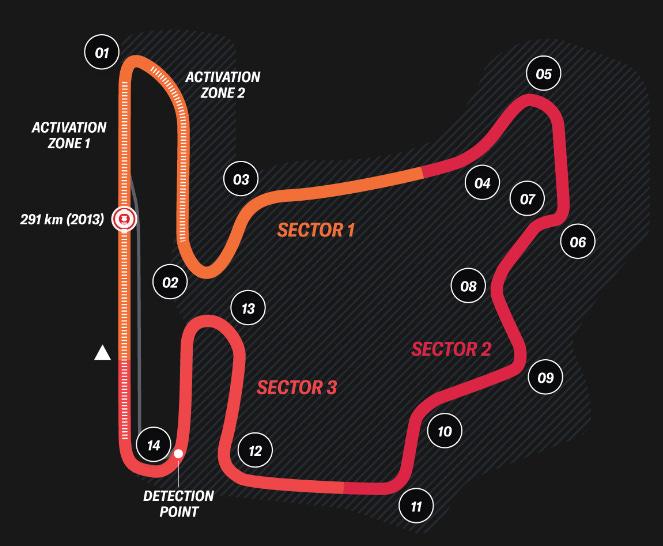
The Hungaroring is a challenging circuit for drivers due to its lack of overtaking opportunities. The 14-corner layout, with six left turns and eight right turns, requires a well-balanced car that can handle quick directional changes to achieve a competitive lap time. The circuit's low average speed limits airflow, making brake cooling a critical concern for teams.
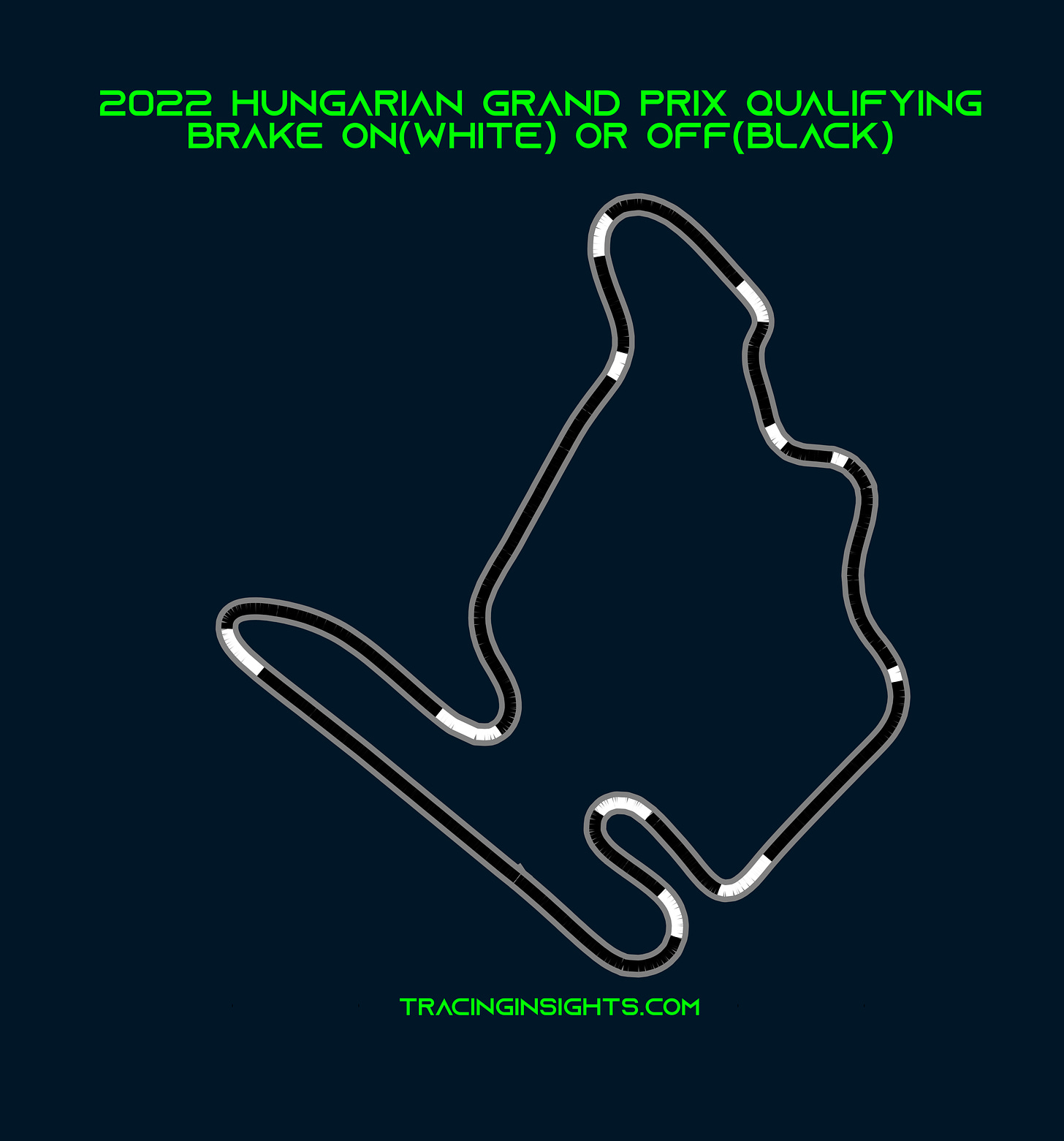
The Hungaroring has one of the lowest top speeds on the Formula 1 calendar, reaching just over 310 km/h. This is primarily because the cars spend only around 10 seconds on a straight during a fast lap, with the majority of the time dedicated to cornering. As a result, teams opt for maximum downforce setups to ensure optimal performance on the relatively short straights and through the numerous corners.
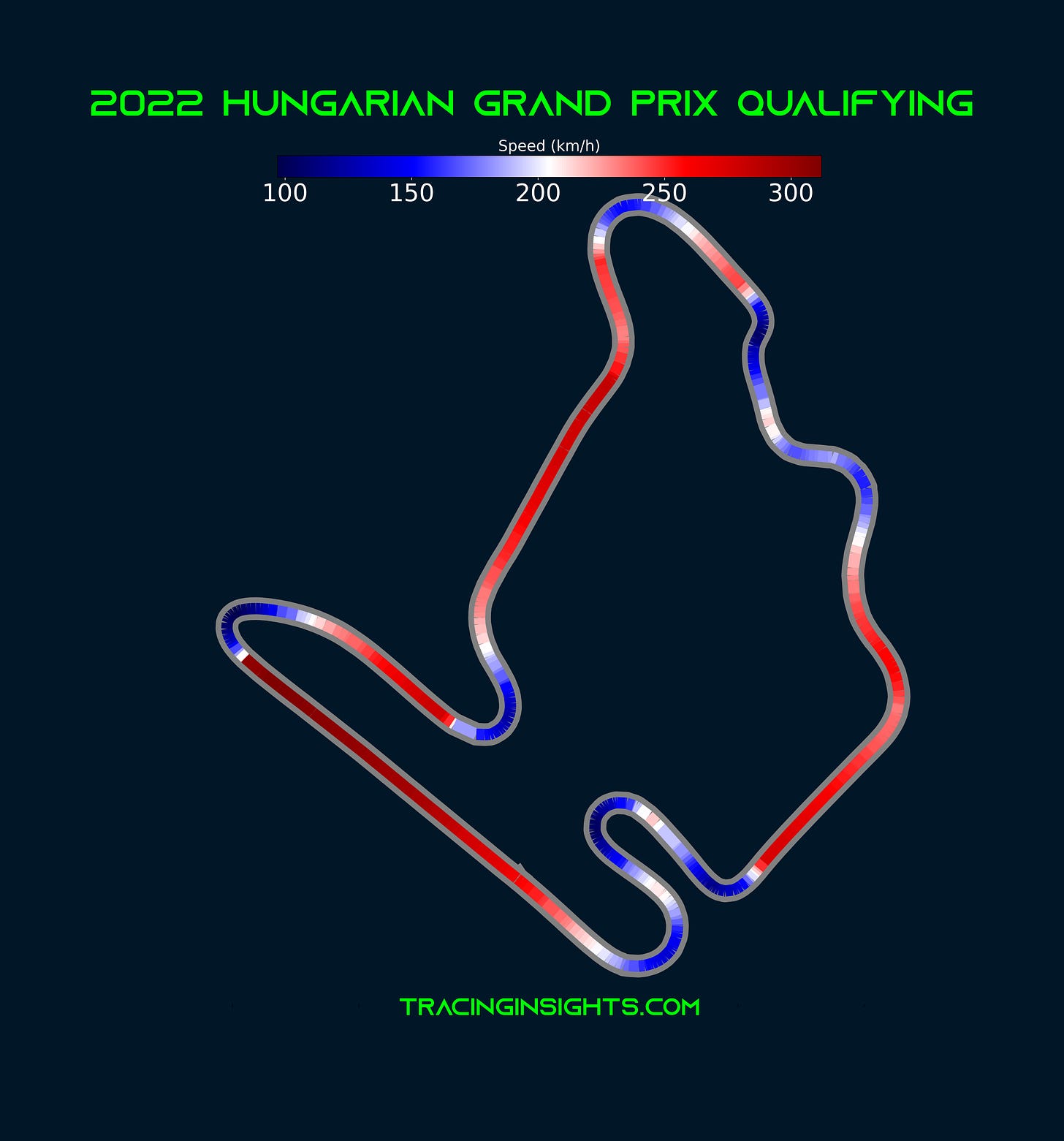
The full throttle percentage at the Hungaroring is just 60%, one of the lowest figures seen across the entire season, reflecting the circuit's twisty nature. The distance from pole position to the braking zone for Turn 1 is relatively long, measuring 444 meters, making it one of the longest runs to the first corner on the calendar, exceeded only by Mexico City, Imola, Barcelona and Monza.
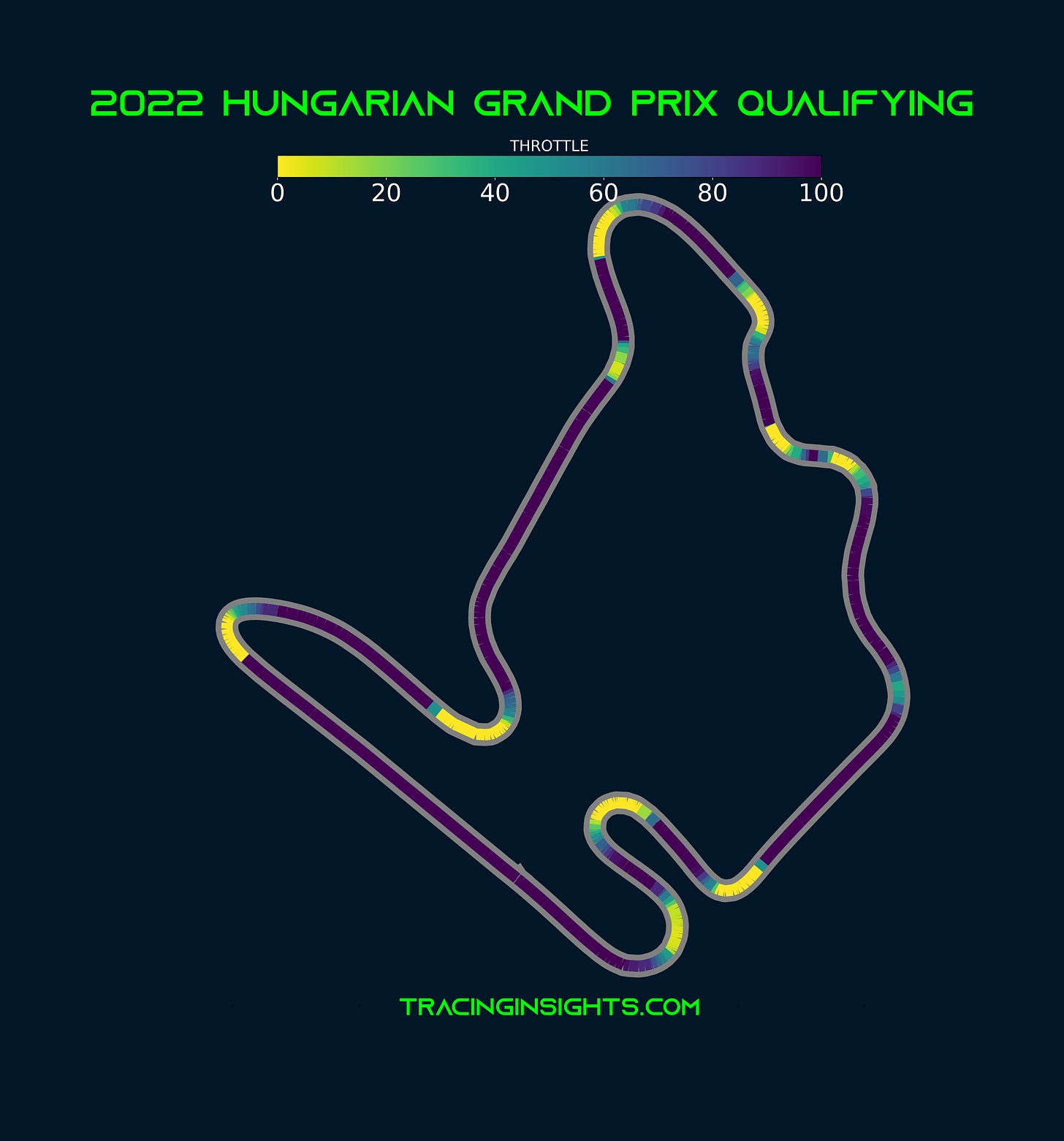
Circuit Challenges and Tire Stress
The kerbs in the final corner and the exit of Turn 11 can be aggressive, but since they are taken at lower speeds compared to faster tracks, they have a less significant impact on the cars. On the other hand, the chicane (Turns 7 and 8) can be problematic, especially in wet conditions, catching drivers by surprise.
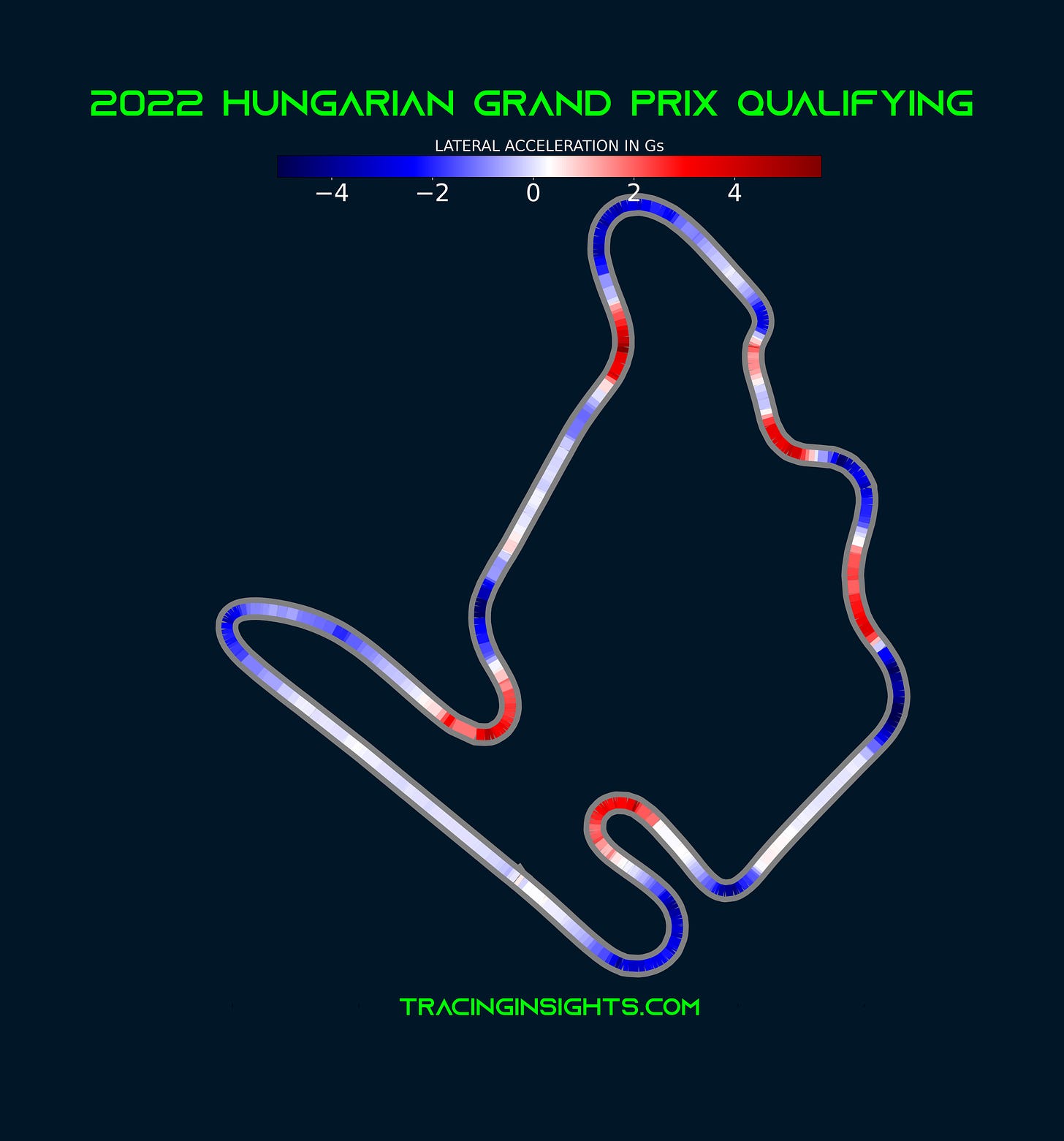
Good traction is vital at the Hungaroring, particularly for negotiating the many slow corners that put significant stress on the rear tires. The race strategy often lies on the borderline between a one-stop and a two-stop race, with tire degradation playing a crucial role in determining the optimal pit strategy.
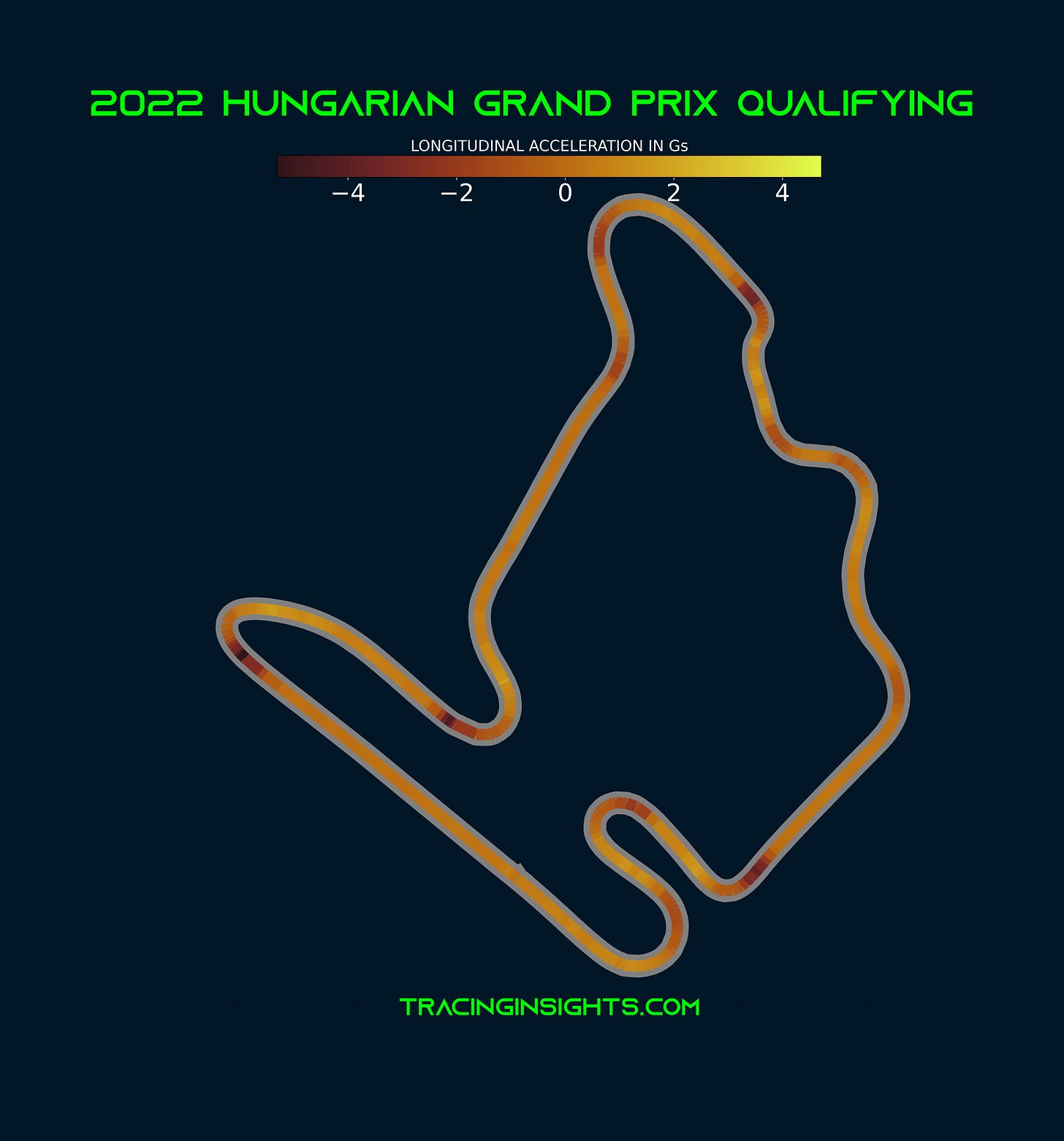
Overtaking Opportunities
While last year's Hungarian GP boasted 61 on-track passes, races at Budapest have seen just 28 passes (median) per race, with most taking place at Turns 1, 2 and 3. The majority of these using DRS assistance.
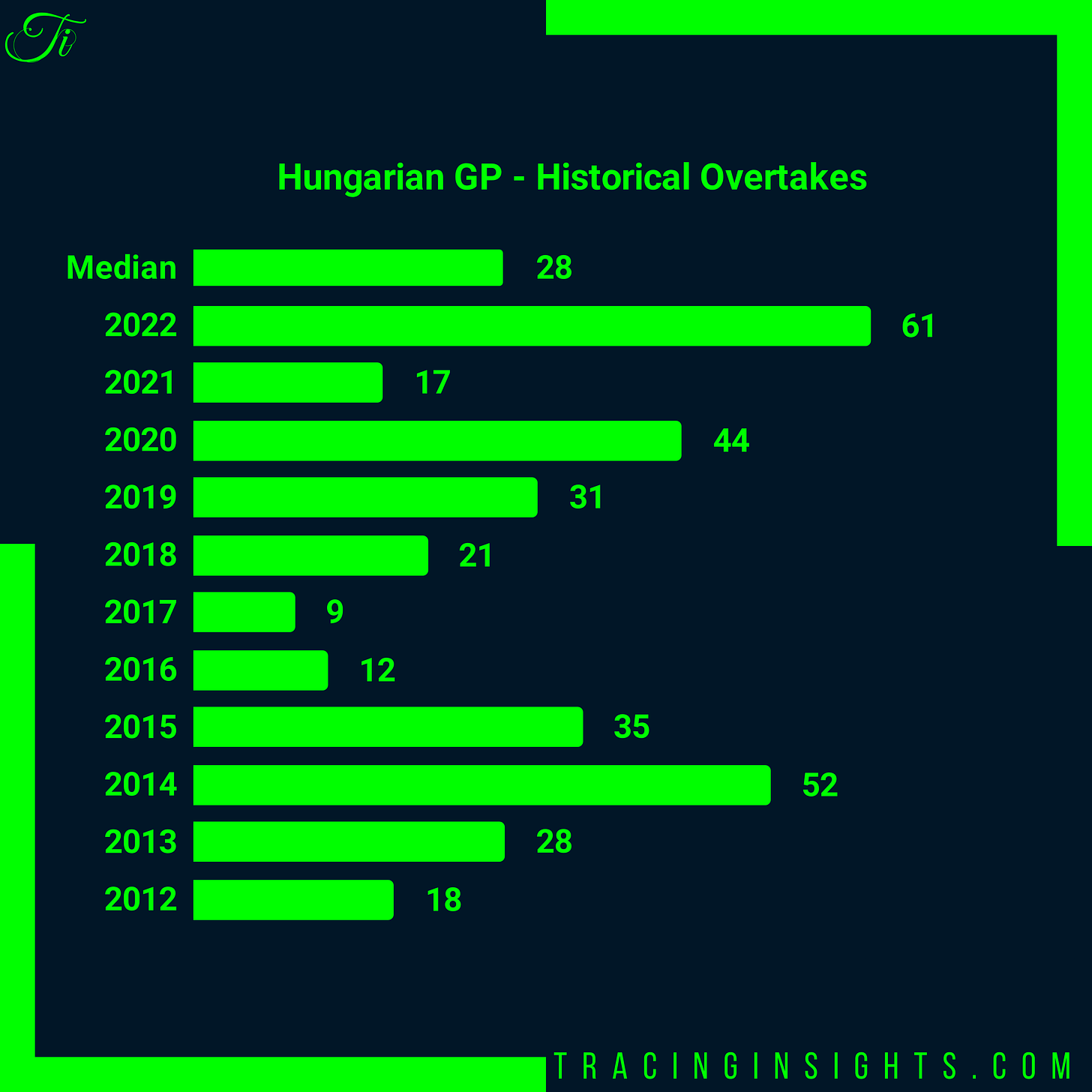
Race Strategy and Weather
With the race taking place at the end of July, and the circuit located in a natural bowl with little airflow, Budapest will be a challenge for thermal management of the tyres as well as driver fatigue.
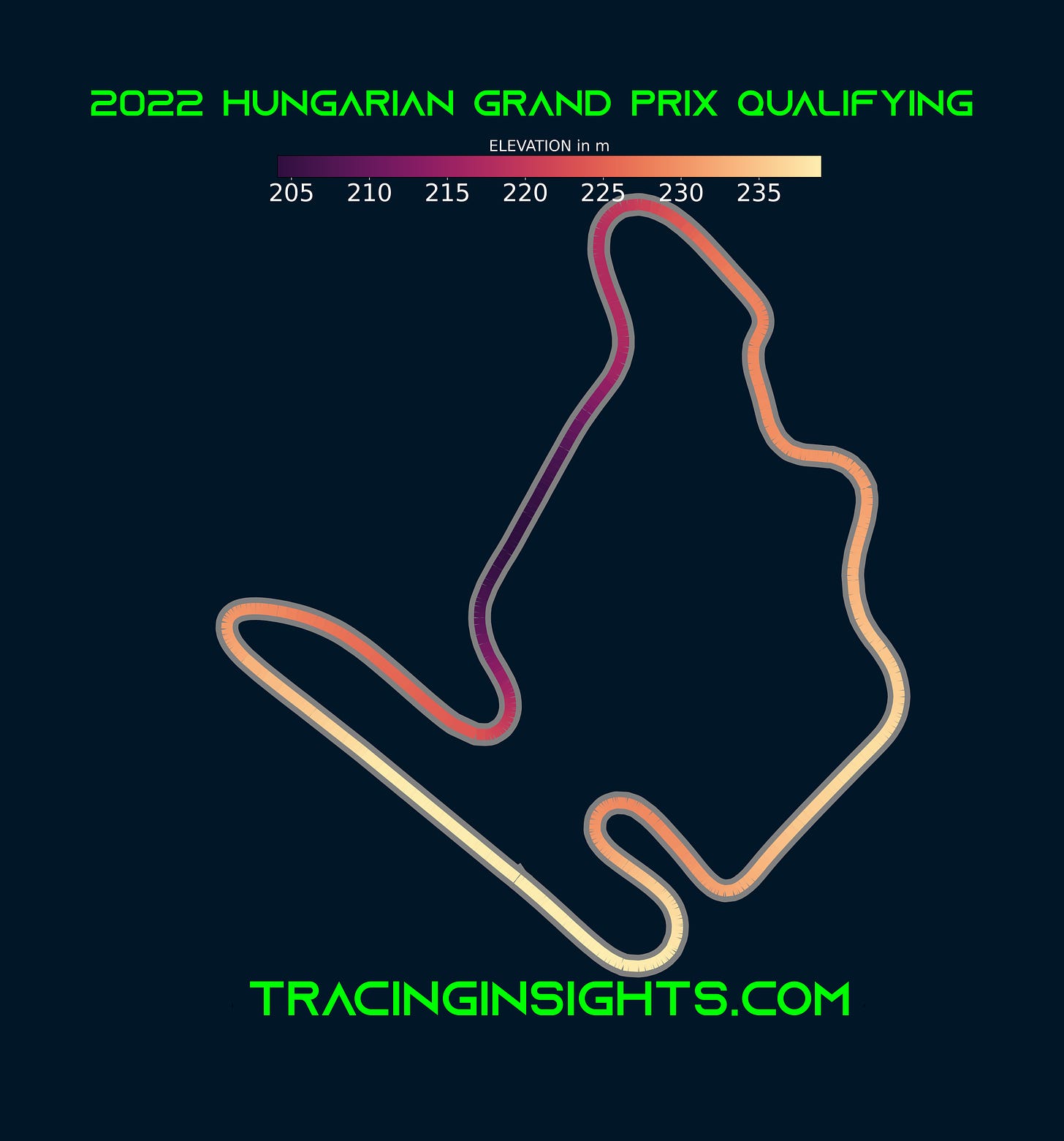
The most common strategy at the Hungaroring is a two-stopper, although some races may witness a one-stop approach. The choices made in 2022 were influenced by a Virtual Safety Car and a Safety Car, resulting in most drivers making three stops, utilizing all available compounds.
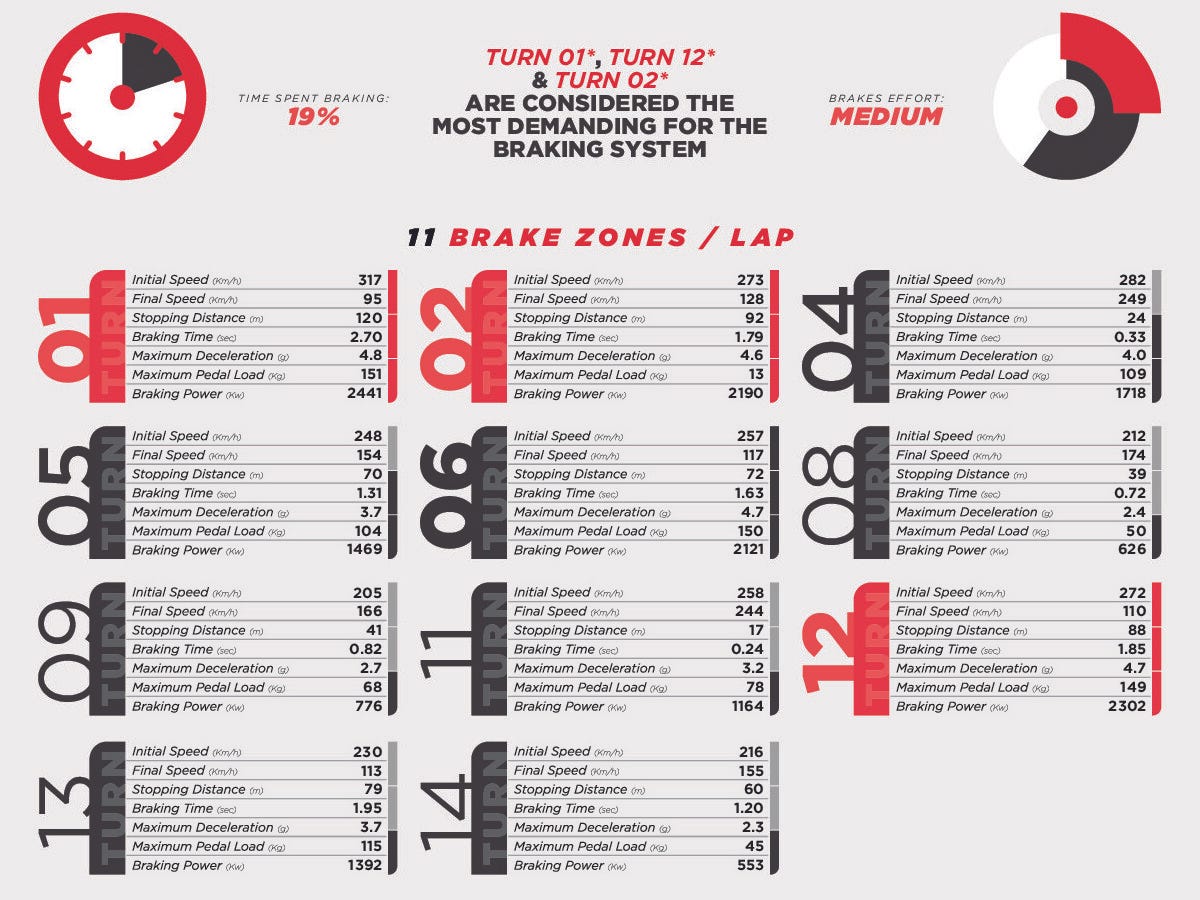
Formula 1 has been experiencing a rather remarkable streak of rain-affected weekends, adding an extra layer of complexity and uncertainty.
Over the past five rounds - Monaco, Spain, Canada, Austria, and Great Britain - each event has seen at least one session impacted by rain. However, the wet conditions' influence on the races goes beyond these five races. Notably, the race in Imola had to be postponed due to flooding in the region, further accentuating the impact of adverse weather on the sport.
The Hungarian Grand Prix weekend may continue this trend, with rain forecasted for Friday and a possibility of some impact on Saturday's sessions as well.
Alternative Tyre Allocation (ATA)
For the Hungarian Grand Prix, Pirelli provides softer compounds than last year. The C3 is designated as the P Zero White hard, the C4 as the P Zero Yellow medium, and the C5 as the P Zero Red soft.
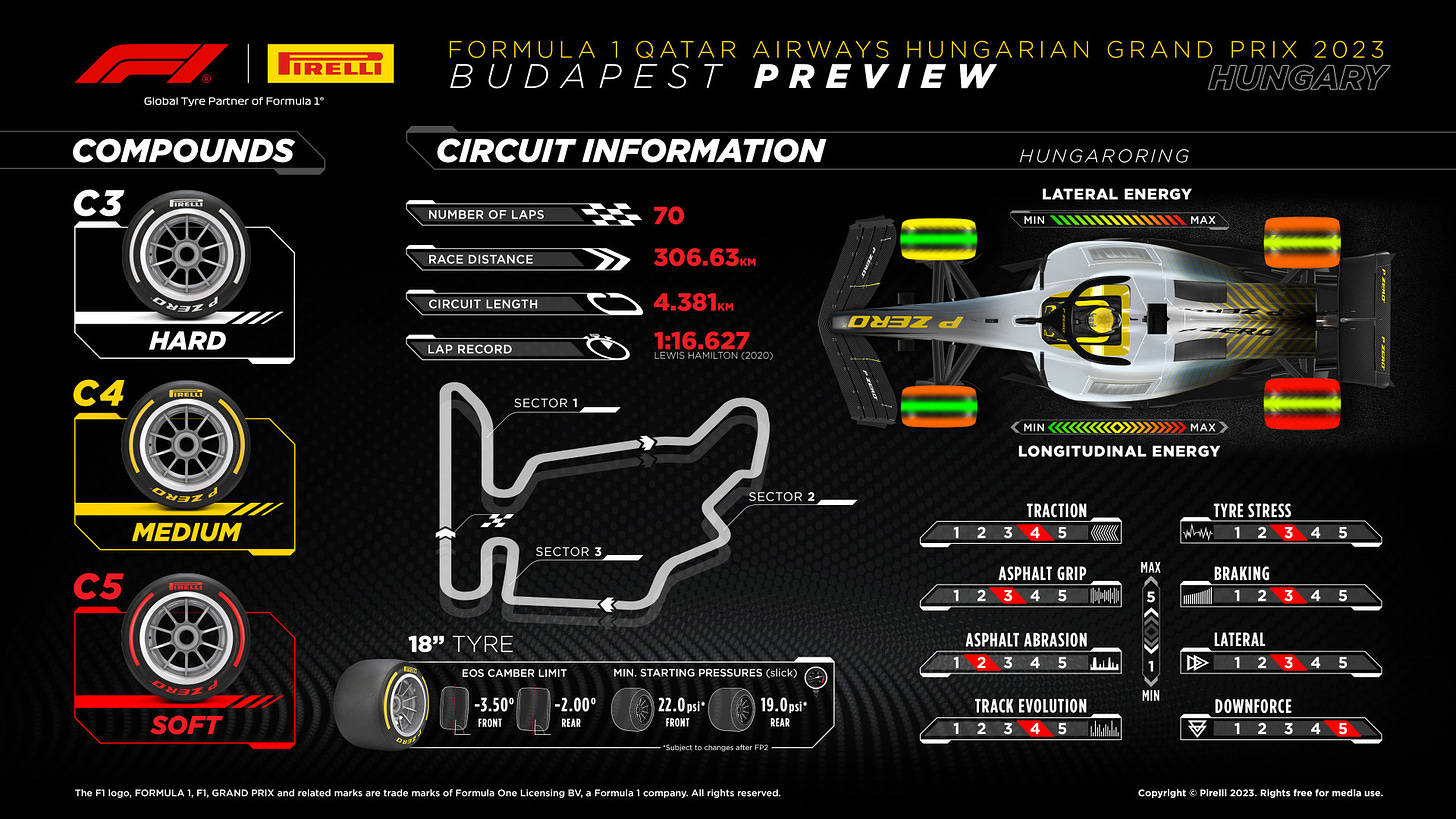
The Hungarian GP marks the debut of the Alternative Tyre Allocation (ATA), introducing specific mandatory slick compound usage for each qualifying session. In Q1, teams must use the hard compound, the medium in Q2, and the soft in Q3. Should qualifying be wet, teams have the freedom to choose any compounds.
Under the ATA rules, each driver has access to a reduced set of 11 tyre sets: three sets of hard, four sets of medium, and four sets of soft tires. The number of wet tires remains unchanged: three sets of full wets and four sets of intermediates, with an additional set of intermediates authorized if rain is expected.
Teams must return one set of tyres at the end of each free practice session on Friday and two sets after FP3 on Saturday. This leaves them with seven sets of tyres for qualifying and the race, with at least one set of hard and one set of medium tyres reserved for the race.
The ATA rules will also be trialed again at the Italian Grand Prix later in September.
Historical Records and Statistics
Lewis Hamilton holds the record for the most successful driver in Hungarian Grand Prix history, boasting eight victories. Michael Schumacher is next on the list with four wins to his name.
The Hungaroring is not known for frequent Safety Car interventions, with only five deployments in the last four races since 2014. Similarly, there have been just four Virtual Safety Car deployments, with two occurring in last year's race, since the system's introduction in 2015.
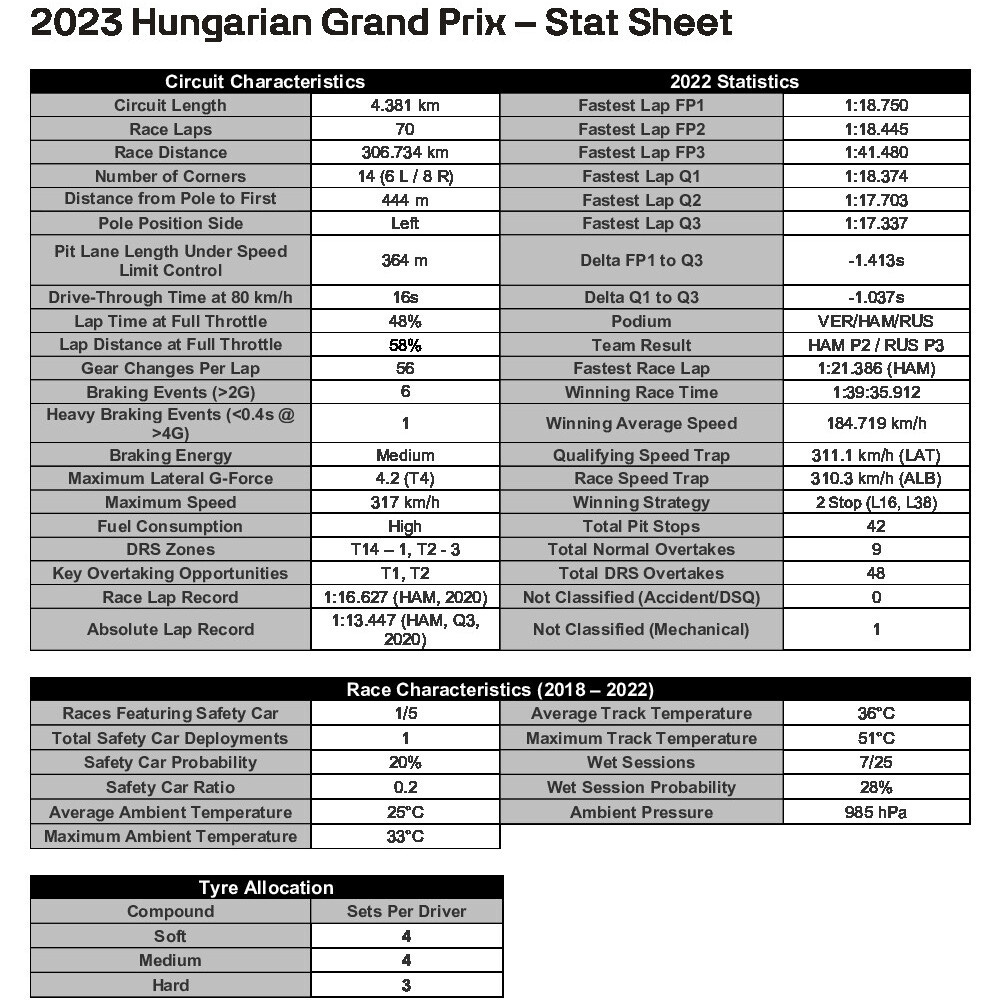
Follow me on Twitter, Mastodon, Instagram, Sub-Reddit, Threads for more analysis